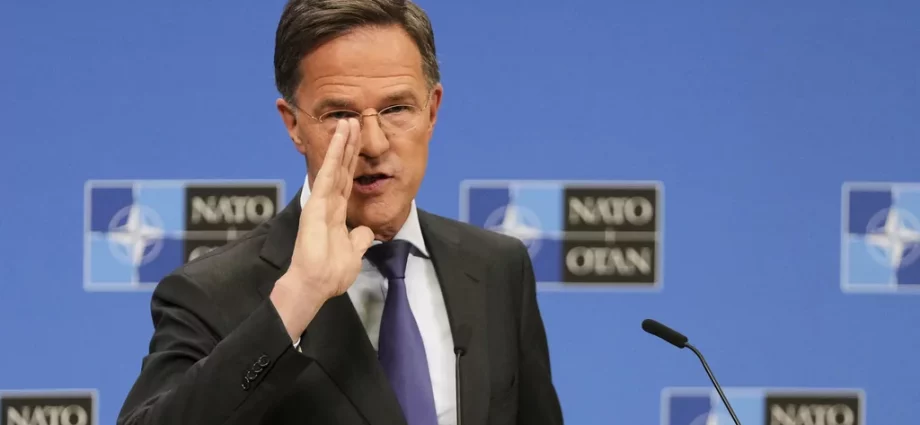NATO Secretary-General Mark Rutte agreed with the Trump administration‘s concern regarding the Arctic on Tuesday but declined to make his thoughts known on its pursuit of Greenland.
The Trump administration has made its interest in Greenland, a Danish territory, clear since the beginning of President Donald Trump‘s term in January, though details of what it looks like remain unclear.
Rutte, known as the “Trump whisperer” for his relationship with the U.S. president dating back to Trump’s first term, called the situation in the north, with Russia and China teaming up in opposing the seven other Arctic countries, all of which are in NATO, “serious” during a pre-ministerial press conference in Brussels on Wednesday. But he did not answer the question that was asked of him, which was who should “control” Greenland.
“Your question has to do with this whole issue of how to defend the Arctic at the high north. This is not only Denmark through Greenland. This is also [about] Iceland, Norway, Finland, Sweden, and Canada, and the United States — seven NATO allies — and the eighth country being Russia,” he said, referencing the eight nations that are part of the Arctic region.
In addition to Russia, China has claimed to be a “near-Arctic” country, though that’s a term it invented for itself.
The NATO chief later said there are “some serious issues to be addressed with the Chinese using the sea lanes, with the Russians rearming the region,” and he added, “I want to concentrate on that issue and be very much focused on this because there is a real issue there which goes really beyond Greenland only.”
His comments come before the NATO Foreign Ministers Meeting this week, which Secretary of State Marco Rubio will attend.
The U.S. has had a military presence in Greenland for decades and has a military base there, Pituffik Space Base, which Vice President JD Vance led a U.S. delegation to last week.
The vice president told troops they believe Greenlanders will “choose, through self-determination, to become independent of Denmark,” which will then allow the administration “to have conversations with the people of Greenland from there.”
It’s unclear what those conversations could include, what the U.S.’s end goal is — including statehood, annexation, or stronger partnerships with an independent Greenland — and what the U.S. would do if Greelanders chose to stay a Danish territory.
Denmark and the U.S. are members of NATO, making any type of aggression toward Greenland from the U.S. a complex matter for the alliance. One of the alliance’s founding concepts is Article Five, which calls for a member to consider an attack against one of the members as an attack on the country itself.
Trump has not ruled out military force, but Vance said the president doesn’t believe it will be “necessary.”
Despite the U.S.’s presence in Greenland, Vance said the U.S. needs to “take a significant position” there, arguing that “it’s extremely vulnerable right now” in part because other countries have “explicitly gone after Greenland … with a mind toward economic exploitation.”
Last month, during Rutte’s first visit to the Trump White House as NATO chief, the president said he could be “very instrumental” in the administration’s efforts.
JD VANCE PREDICTS GREENLAND WILL ‘PARTNER’ WITH US IN VISIT TO THE ARCTIC ISLAND
Rutte declined to comment directly on the U.S. interest in Greenland and instead highlighted the threat environment from the Arctic as a whole.
“So, when it comes to Greenland, yes or no, joining the U.S., I would leave that outside, for me, this discussion because I don’t want to drag NATO in that. But when it comes to the high north in the Arctic, you are totally right,” he said at the time. “We know things are changing there, and we have to be there.”


